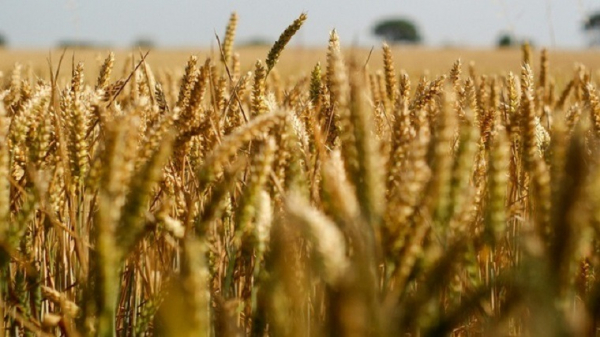
ZIMBABWE’S winter wheat output is expected to reach 400 000 metric tonnes up from 158 000 tonnes achieved in the past seasons due to an increase in hectarage under command agriculture and introduction of support initiatives, an official has said.
By Freeman Makopa
Department of Research and Specialist Services principal research economist, Freeman Gutsa told NewsDay that the target was to achieve transformational impact and sustainable increases in wheat productivity through the use of innovation platforms.
“Government of Zimbabwe is also now supporting wheat production through the command agriculture initiative. Beginning this year, 2018, the African Development Bank has also introduced another project supporting wheat through innovation platforms called the Technologies for African Agriculture Transformation (TAAT).
“The TAAT wheat initiative in Zimbabwe aims at achieving transformational impact and sustainable increases in wheat productivity and production for enhanced food security, economic growth, and poverty alleviation in the county.
Gatsi said if the yield levels were increased to an average of six tonnes per hectare, this would positively impact on the wheat output.
“Potentially, if the yield levels are increased to an average of six tonnes per hectare, production would reach 420 000 metric tonnes. In doing so, Zimbabwe can and will reverse the unsustainable overdependence on imports.”
Gutsa said the country imports wheat regularly because its domestic production has remained short of demand. Total annual wheat consumption requirement for Zimbabwe stands at about 400 000 metric tonnes
- Chamisa under fire over US$120K donation
- Mavhunga puts DeMbare into Chibuku quarterfinals
- Pension funds bet on Cabora Bassa oilfields
- Councils defy govt fire tender directive
Keep Reading
Wheat production has been declining dramatically from 2001’s peak of about 325 000mt to current low levels of about 158 000 metric tonnes and is being grown on approximately 43 800 hectares under irrigation with an average yield level of 3,61 tonnes per hectare.
Today, Zimbabwe is less than 40% self-sufficient in wheat production. Consequently, the recent ever widening gap between local production and demand has created a huge shortfall that is primarily met by imports at a cost of over $83 million per year in foreign exchange.
The current scenario depicting low production is as a result of a number of factors. The area under wheat production since 2009 dwindled and is averaging about 10 000 hectares, the average yield level since 2009 is 2,95 metric tonnes per hectare with a minimum of 1,55 metric tonnes per hectare and a maximum of 4,21 metric tonnes per hectare.
Wheat production in Zimbabwe has evolved over highs and lows with current production standing at 19% of the highest production level attained in 1990. In 1980, the country started off with 162 000 metric tonnes and in 2001 production increased to about 325 000 metric tonnes. During this period, there were resourced and well-incentivised farmers who could commandeer above 50 000 hectares of wheat at an average yield level of 6,5 metric tonnes per hectare.
There was also well-coordinated wheat marketing arrangements under the auspices of ZIMACE, which facilitated cash-based and transparent marketing, access to regional and international prices, market-based pricing, opportunities for forward contracting, and participation of smallholder wheat producers. There were well-networked farming communities supported by the Zimbabwe Winter Cereals Association.
“Blanket subsidies for key inputs such as wheat seed and fertilizers potentially can boost production and productivity. The current production cost hovering around $2 500 per hectare is way above the reach of many farming communities who are faced with other relatively high value crops with better margins. The target for this intervention should be to restore profitability even if the price of local wheat on the market is equal to import parity price currently averaging about $340 per metric tonne,” Gutsa said.











